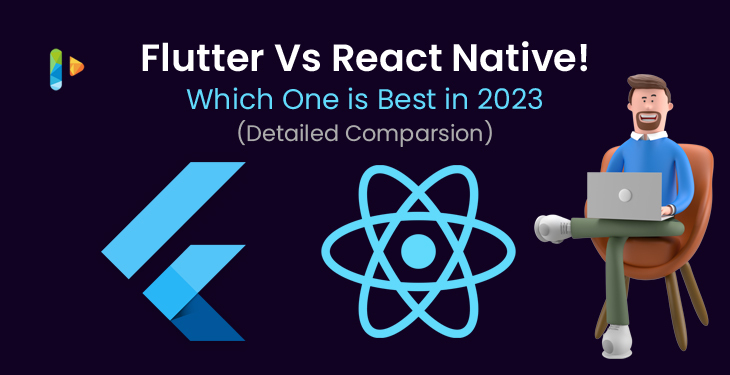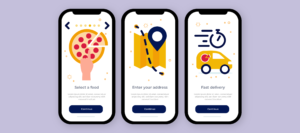Flutter vs React Native! Which one is Best in 2023 (Detailed Comparison)
“According to survey results, mobile app revenue has reached $581.9 billion and is projected to reach $935 billion by 2023.”
Considering switching to be responsive in 2022? But are you unsure of the technology you should use to rapidly and affordably construct your application? If you answered “yes” to both questions, your choices will be limited to either Flutter or React Native.
But once more, you’ll be left wondering which technology is the greatest option for developing cross-platform apps!
While there is a ton of material on the internet that can help you understand flutter vs react native technology’s fundamentals, benefits, and drawbacks. However, how would you weigh these benefits and drawbacks side by side to determine which technology is ideal for your app development requirements?
A significant issue!
So, You must carefully weigh the various components of both frameworks to choose the ideal one for your project. So, let’s dive in!
What is Flutter?

Flutter is a reactive, open-source, cross-platform mobile application framework utilizing the Dart programming language. Both Dart and Flutter were developed by Google, using the framework in some of its most important programs. In May 2017, the initial alpha version was released. Google, however, has consistently provided updated versions, the most recent being May 2021.
Using Flutter, businesses can create a single app that functions on the web, mobile devices, and desktop computers using the same codebase. Apps made using Flutter are simpler and well-liked by businesses like Alibaba that require numerous frameworks.
Pros & Cons of Flutter
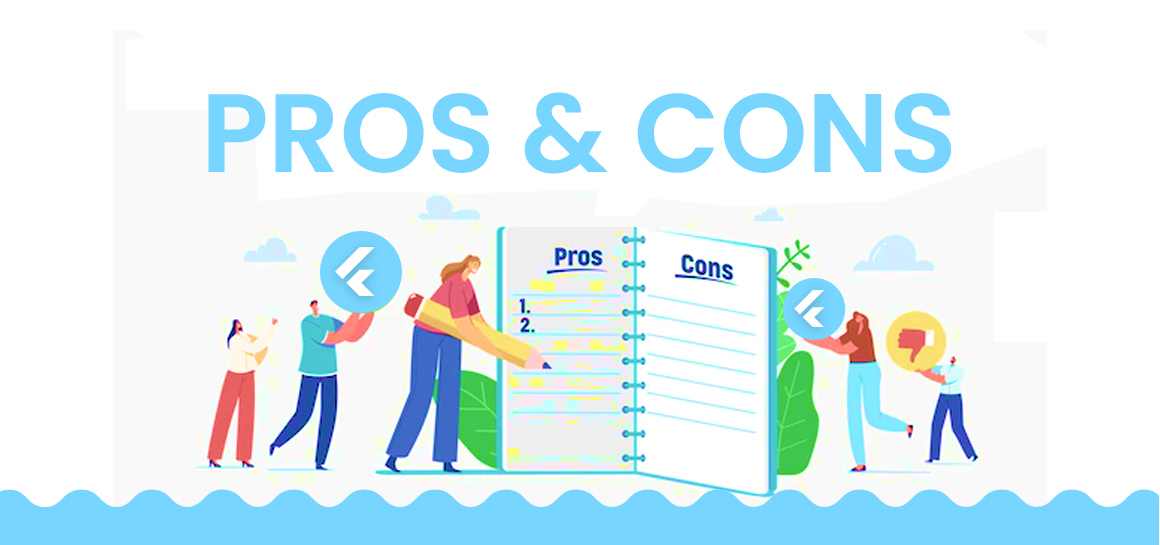
Like any other framework, using Flutter has both pros and cons. However, the final decision regarding the framework to choose rests with the developer. To choose the option that would work best for your project, you must check the flutter vs react native performance. Let’s dive into some of the pros and cons of Flutter.
Pros of Flutter
- With Hot Reload, changes can be almost instantly reflected. Developers can update the codebase by using hot reload. You can view the difference without restarting the app due to this functionality
- You only need to debug once rather than separately for each platform because the codebase is the same for iOS and Android platforms.
- The same user interface will be used on both new and old devices.
- It uses bespoke widgets rather than components found in the standard system. Additionally, the UI is user-friendly. In comparison to React Native, Flutter has a considerably better-looking appearance.
- High security and scalability are provided.
Cons of Flutter
Despite growing in popularity among cross-platform programming tools, Flutter has certain cons as well:
- The apps are larger than the corresponding native programs in size.
- It has fewer third-party libraries and tools than React Native does.
- The use of the Dart language is one of the drawbacks. Flutter app development requires knowledge of this specific language.
- Flutter requires a little more time and effort to install.
- Even so, it has fewer tools and libraries than native programs do.
When to Use it?
- Large expenditures and difficult projects
- Complex cross-platform applications
- Reusing code for desktop and mobile applications
- Less experienced developers because of extensive documentation support
What is React Native?

Facebook first released React Native in 2015, and in 2018, it had the second-highest number of contributors. However, currently, a number of influential people and businesses around the world, like Microsoft, Callstak, Expo, and Software Mansion, support React Native.
And if we talk about its success, it is responsible for some of the most well-known and incredible applications in the world, including Facebook, Pinterest, Instagram, Uber Eats, and others.
Let’s now go over some of its pros and cons.
Pros & Cons of React Native

Flutter or React native have features that make them more or less appealing. Being an RN has both pros and cons. Here, we’ll discuss them.
Pros of React Native
- It provides hot-reloading capabilities that enable iOS and Android app development that implement changes to codes instantly so that the changes are seen immediately.
- An extensive and strong ecosystem of UI libraries exists in React native. The UI experience these libraries offer is the same regardless of the platform you are designing for.
- A single codebase makes creating programs for several operating systems easier.
- Compared to other options, such as using an app builder or no-code solutions for your cross-development needs, it is completely free.
- It has a vibrant and helpful community.
Cons of React Native
- Using the debugging tool “Chrome debugger” for editing, code inspection, etc., is not practical for many developers.
- React Native outperforms most other cross-platform development frameworks in terms of performance, but it falls short of creating native apps using platform-specific tools and languages.
- Packages and libraries have been abandoned in large numbers.
- Its lack of support for parallel threading and multi-processing may result in slightly slower performance for some applications.
- It can be simple to break the UI.
When to Use it?
- Large expenditures and difficult projects
- Complex cross-platform applications
- Reusing code for desktop and mobile applications
- Less experienced developers because of extensive documentation support
React vs Flutter has many features that the other doesn’t. The fact that neither of them is a native of the area where they will be erected presents an issue for the development. All challenges, however, become minor if you have adequate support and libraries. It would help to compare Flutter with React Native to uncover the key differences because they both have pros and cons.
Flutter vs React Native
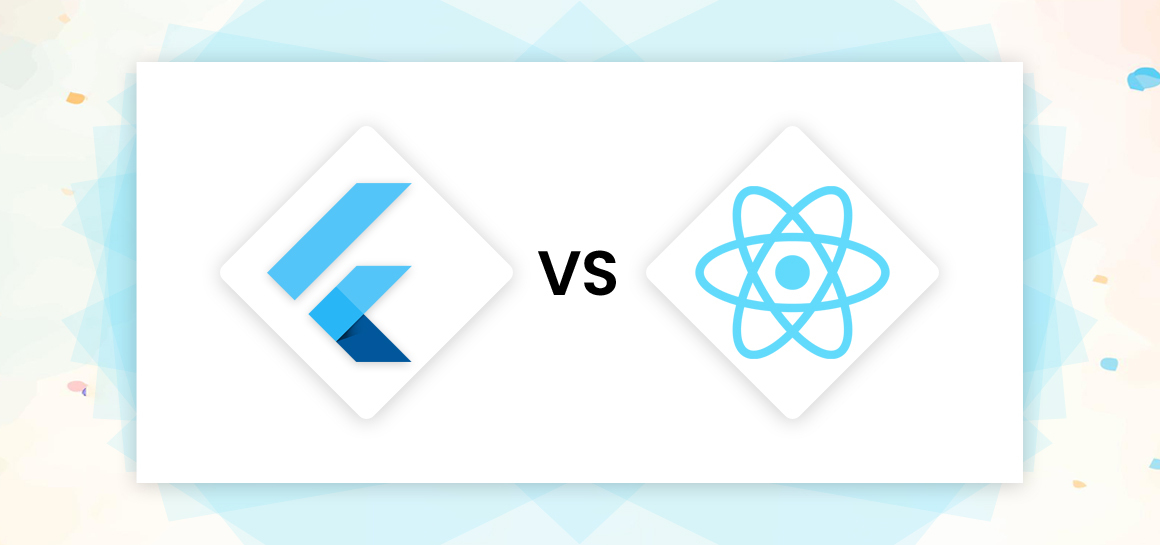
React Native and Flutter both have a history of notable commercial success. They both appear on the lists of development tools maintained by industry heavyweights, including Salesforce, eBay, Uber, and Nubank.
Consequently, how should you pick a framework for your mobile app development? We contrasted React Native vs Flutter.
Check out the results and see what we can infer.
|
Aspect |
Flutter |
React Native |
|
Programming Language |
Dart |
JavaScript |
| Initial release |
2018 |
2015 |
| Creator |
|
|
| Ecosystem |
Quickly growing and becoming mature |
Quite mature. Used by many big companies |
| Target audience coverage |
High |
Low, depends on the platform |
| Performance | On some platforms, certain design elements might not display correctly; certain functions might not be available; and performance might vary. | Native apps exert the ideal load on a user’s device and are simpler to fix or upgrade than other software types. Native apps also make the best use of the hardware they run on. |
| Development tools and documentation | Great documentation and starter toolkit | Extensive documentation and tutorials. Starting development from scratch is difficult. |
| When to choose | The emphasis when building an app with a frame rate between 60 and 120 frames per second is the user interface. | You want code that works on desktop, web, and mobile devices. |
| Do not choose if | Your app should be smaller than 4MB | You’re seeking robust enterprise-level software. |
| Famous Apps | Google Ads, Cryptograph, eBay Motors, Alibaba-Xianyu | Instagram, Walmart, Tesla, Facebook |
Flutter or React Native: Which one is Best for your App?
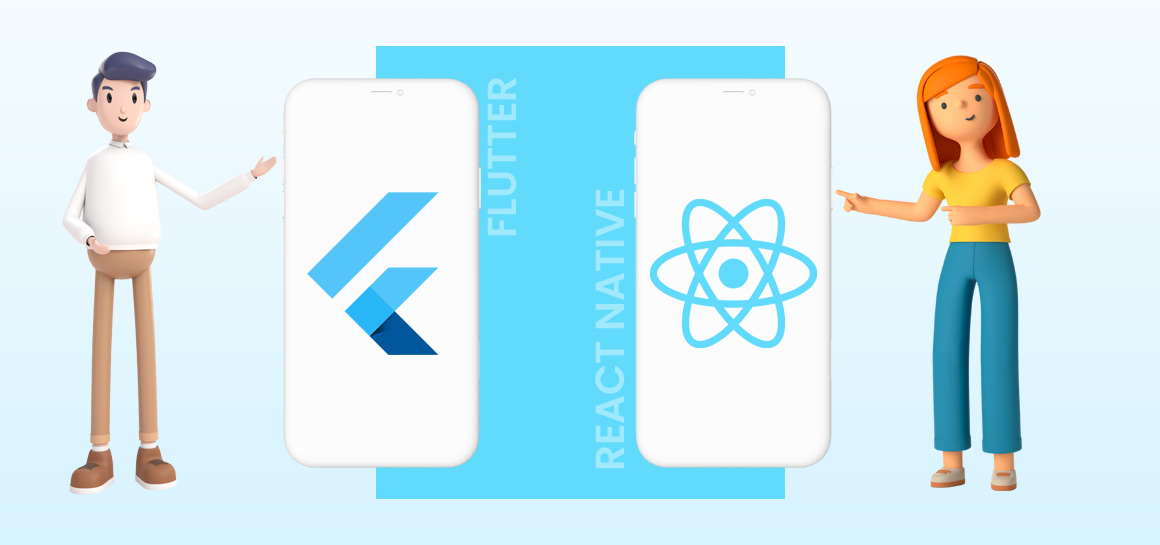
Obviously, both frameworks have the same core features and operate in the same area of the software development market. Both are suitable for creating a cross-platform mobile MVP with the ability to reuse the code in the future and expand it with any of the available free official or community add-ons. When building for various platforms, time-to-market and project costs are both reduced.
But how do they differ from one another?
|
Choose Flutter |
Choose React Native |
| The application will put a significant amount of strain on the GPU and CPU. | The application will only make use of visual representations of native UI components. |
| The user interface will need to be carefully customised. | Your preferred development team is proficient in JS, React, and React Native (which is more likely than Dart fluency) |
| There’s a possibility that the app will expand beyond mobile, or that the following app will profit from the current team’s experience. | The application aims to be lightweight and is quite simple. |
| Fit for development on PCs, car entertainment systems, wearable and embedded devices | The app is only available on mobile (iOS & Android) and/or web. |
Conclusion:
React Native vs Flutter are effective, performant, and reliable frameworks in various mobile app applications. However, you should thoroughly consider the requirements of your app project before selecting between the two.
Therefore, contact our tech professionals at Pairroxz if you want to create a fantastic cross-platform mobile app that continues to be a perfect answer to your customer’s problem. In addition to creating products, we also assist you in determining your company’s needs and objectives and making the best technological decisions that will enable you to expand.

